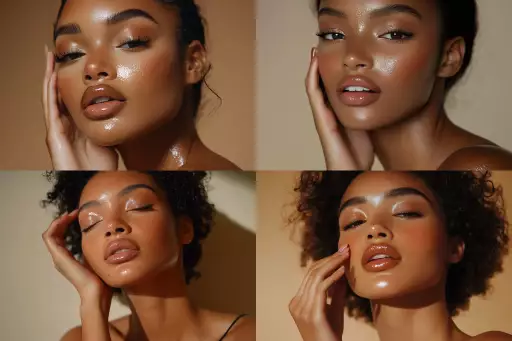Explore the Best AI Image Gallery

The AI Image Revolution: Reshaping Creativity, Raising Questions
Imagine a world where anyone can conjure stunning visuals with just a few words. This is the promise of AI image creation tools, technologies that are rapidly transforming the creative industry and raising profound questions about the nature of art, authorship, and ethics.
A New Creative Frontier
From generating realistic portraits to crafting fantastical landscapes, AI algorithms are pushing the boundaries of whats possible in visual art. Tools like DALL-E 2, Midjourney, and Stable Diffusion empower users to translate their imagination into captivating images, democratizing access to powerful creative resources.
Applications Across Industries
- Marketing and Advertising: AI can generate unique visuals for campaigns, personalize content, and create eye-catching social media graphics.
- Design and Product Development: Imagine visualizing product concepts, creating mockups, or generating variations with ease, accelerating the design process.
- Entertainment and Gaming: From character design and concept art to generating immersive environments, AI can revolutionize content creation in gaming and film.
- Education and Research: Visualizing complex data, creating interactive learning materials, and exploring new ideas through generative imagery can enhance educational experiences.
The Ethical Landscape
While the potential of AI image creation is vast, its crucial to acknowledge the ethical considerations that accompany this technology:
Copyright and Ownership:
Who owns the copyright to an image generated by AI? Is it the user who provides the prompt, the developer of the algorithm, or the AI itself?
Bias and Representation:
AI models are trained on massive datasets, which can reflect existing societal biases. This can result in the generation of images that perpetuate stereotypes or lack diversity.
Misinformation and Deepfakes:
The ability to create realistic but fake images raises concerns about the spread of misinformation and the potential for malicious use, such as creating convincing deepfakes.
Navigating the Future
As AI image creation continues to evolve, its essential to establish guidelines, regulations, and ethical frameworks that ensure responsible development and use. This includes:
- Transparency and Explainability: Making AI algorithms more transparent and understandable can help address concerns about bias and unintended consequences.
- Data Governance and Diversity: Ensuring that training datasets are diverse, representative, and free from harmful biases is crucial.
- Education and Awareness: Raising public awareness about the capabilities and limitations of AI image creation can empower individuals to critically evaluate generated content.
- Collaboration and Dialogue: Fostering open dialogue between policymakers, technologists, artists, and ethicists is essential for shaping a future where AI benefits society as a whole.
The AI image revolution presents both exciting opportunities and significant challenges. By embracing responsible development practices and engaging in thoughtful discussions about the ethical implications, we can harness the power of AI to enhance creativity while safeguarding the integrity of artistic expression.


](https://images.ai-img.art/thumbnails/150/4289d1230b86a96c4d556636c3167bed0ef38f850826549517e4e45db4d87bf7.webp)



](https://images.ai-img.art/thumbnails/150/bddf3ae4a232290858389b933c866ad3be429ef2e25c23a9f4d7713ed6e44d0b.webp)


















](https://images.ai-img.art/thumbnails/150/f9584153b4cddd8c9fab611dc10247549b275c59bc173251e37d0935874f9deb.webp)
](https://images.ai-img.art/thumbnails/150/f67d9af3398150f2ab1bcf250717fea134275e2ca896252b54a4d9bb3719f9ac.webp)



](https://images.ai-img.art/thumbnails/150/c2c9c48b38fae37f0a457b80b084ed01ba803810fc8f488c8f610c03abc74049.webp)





](https://images.ai-img.art/thumbnails/150/008b5d5d49667cc2e93a5f8a8adfaa545963da99c39ff0901f5296294636400d.webp)




